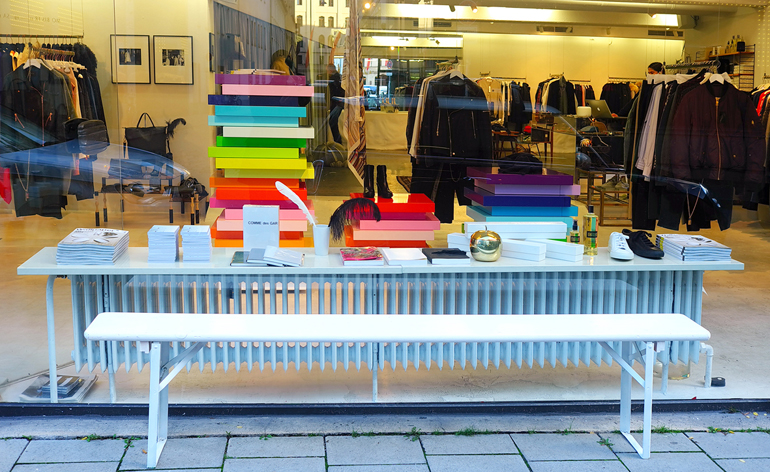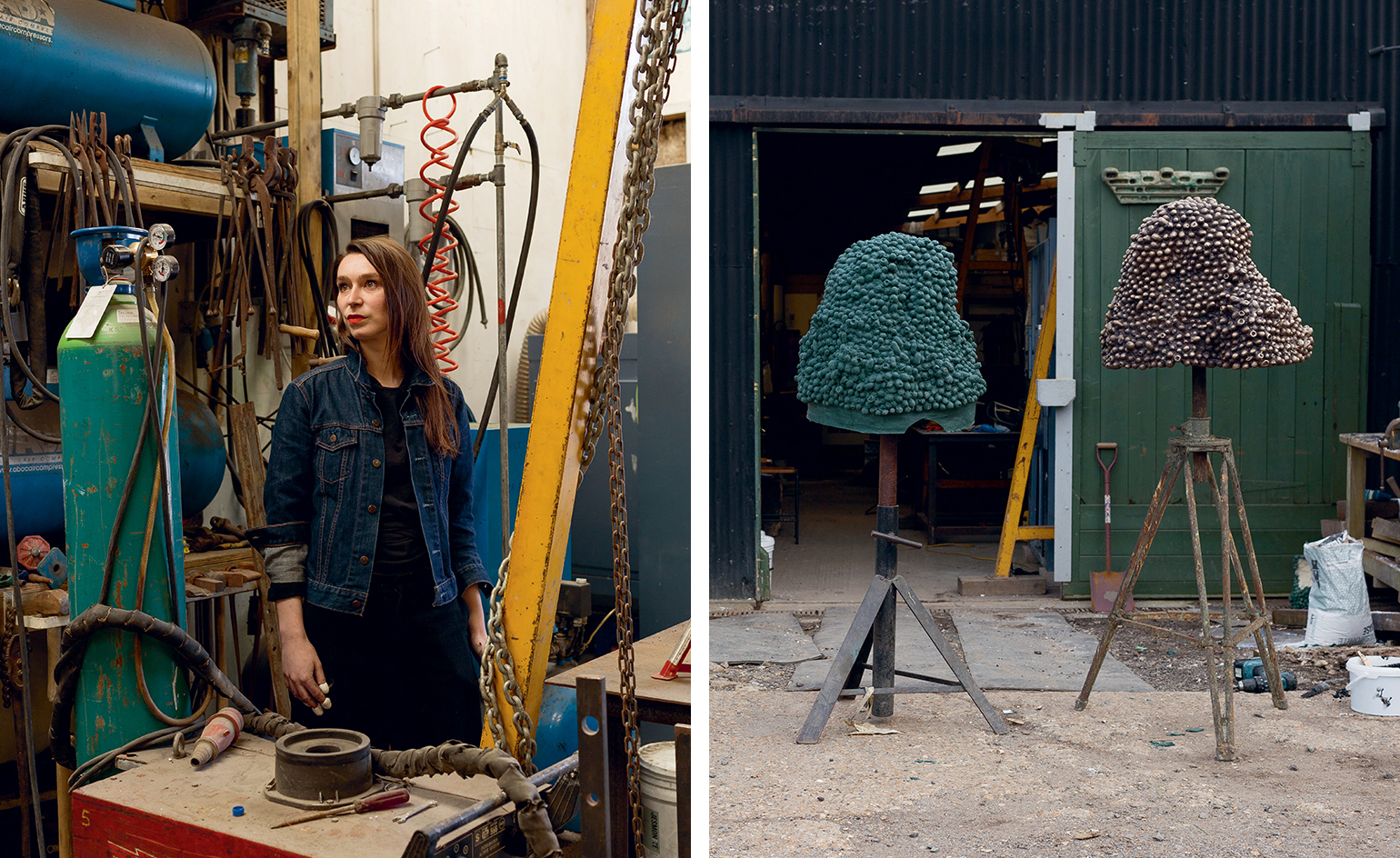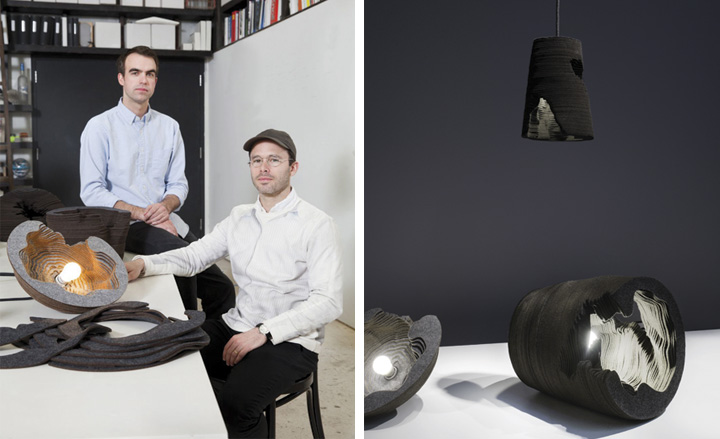Furniture brand Schönbuch puts Emmanuelle Moureaux’s Wallpaper* Handmade storage units into production

One of the brightest collaborations from our 2013 Handmade exhibition (see W* 173) in Milan was between the Tokyo-based French architect Emmanuelle Moureaux and the German furniture company Schönbuch. When we heard that their one-off collection of 'Mille-Feuille' storage units were going into studio production, we have to admit to feeling a little smug about our matchmaking endeavours.
We put our Handmade collaboration couples (and ourselves) under considerable pressure to come up with their pieces in time for the Milan show each year. The normal time span for product development in the furniture industry, from concept to retail, is something like five years. In the case of Schönbuch and Moureaux, Schönbuch's managing director Michael Ress explains, 'we had no more than six weeks'. But a whirlwind romance doesn't have to be short-lived if the chemistry is there.
'Right from the beginning, they understood what I imagined completely,' Moureaux says of working with the Bavarian company. She marvelled at the painstaking effort the firm went to in order to get the colours, form and finish exactly right. Adds Ress: 'It was an excellent cooperation between Emmanuelle and our team, a perfect initial design, great communication, quick responses and fast decisions.'
Little adjustment was required to take the prototypes the next step. 'The product was nearly ready for production right after Milan, we only changed the drawers from silver-covered MDF to solid stained oak, since we believed this more traditional form of drawer manufacture would fit the product better and enhance the quality,' Ress explains.
Now, some six months later, the fruits of their joint endeavours are ready to share with a broader public. Specializing in high quality foyer and hallway furniture, Schönbuch knows exactly how to make an entrance. And being a Bavarian firm, it seemed appropriate that the launch presentation of its new Mille-Feuille storage units took place in Munich's noted fashion concept store Schwittenberg, where the colourful, stand-alone statement pieces proved a perfect foil for the stricter sartorial lines of clothing brands APC, Acne and Perret Schaad.
Available in S, M and L versions, with two, three and four drawers respectively, the price tag for a Mille-Feuille ranges from €3,870 to €7,510, but this is no off-the-peg product. Lacquered in eight, twelve or 21 colours (Schönbuch had to invest in a new paint mixing machine to meet Emmanuelle Moureaux's exact specifications), the Mille-Feuilles take a long time and extremely skilled craftsmanship to produce. Furthermore, the company do not expect to make more than a small number of examples at first. After all, these pieces are showstoppers, not staples.
Emmanuelle Moureaux has designed one-off furniture pieces before for her buildings and interiors, but this is her first series piece and, judging by the bouyant mood at the launch party, we get the distinct impression it won't be her last.

Schönbuch has put the collection - first created for our 2013 Handmade exhibition in Milan - into studio production

Available in S, M and L versions, with two, three and four drawers, the pieces are lacquered in eight, twelve or 21 colour combinations

Given that Schönbuch is a Bavarian firm, it seemed only fitting that the range's launch take place in one of Munich's noted design concept stores Schwittenberg

Emmanuelle Moureaux has designed one-off furniture pieces before for her buildings and interiors, but this is her first series piece and, judging by the bouyant mood at the launch party, we get the distinct impression it won't be her last
ADDRESS
Schwittenberg Munich
Hildegardstrasse 2
80539 Munich
Receive our daily digest of inspiration, escapism and design stories from around the world direct to your inbox.
-
 We asked six creative leaders to tell us their design predictions for the year ahead
We asked six creative leaders to tell us their design predictions for the year aheadWhat will be the trends shaping the design world in 2026? Six creative leaders share their creative predictions for next year, alongside some wise advice: be present, connect, embrace AI
-
 10 watch and jewellery moments that dazzled us in 2025
10 watch and jewellery moments that dazzled us in 2025From unexpected watch collaborations to eclectic materials and offbeat designs, here are the watch and jewellery moments we enjoyed this year
-
 Patricia Urquiola reveals an imaginative inner world in ‘Meta-Morphosa’
Patricia Urquiola reveals an imaginative inner world in ‘Meta-Morphosa’From hybrid creatures and marine motifs to experimental materials and textiles, Meta-Morphosa presents a concentrated view of Patricia Urquiola’s recent work
-
 Kitchen by Gitta Gschwendtner and Schiffini
Kitchen by Gitta Gschwendtner and Schiffini -
 French designer Marlène Huissoud creates silkworm cocoon set with London Bronze Casting
French designer Marlène Huissoud creates silkworm cocoon set with London Bronze Casting -
 Storm force: Ishinomaki Laboratory has turned utility into a fine art
Storm force: Ishinomaki Laboratory has turned utility into a fine art -
 Pillars of magic: the making of Note and Antique Mirror’s pastry tables
Pillars of magic: the making of Note and Antique Mirror’s pastry tables -
 Splinter cell: the making of John Hogan and Lasvit’s ‘Field’ chandelier
Splinter cell: the making of John Hogan and Lasvit’s ‘Field’ chandelier -
 Felt lights, by Snarkitecture and The Woolmark Company
Felt lights, by Snarkitecture and The Woolmark Company